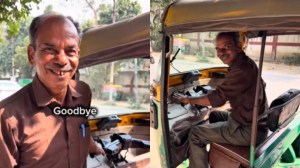Once limited to the southern states, India’s senior living market is rapidly expanding nationwide, driven by evolving societal norms and the increasing nuclearisation of families. Seniors are no longer waiting for medical needs to consider a move to specialised housing—many in their early 60s are opting for independent units to enhance their quality of life. Project developers, too, are targeting growth in temple towns like Varanasi, where more seniors are choosing to spend their later years in a culturally and spiritually rich environment.
Despite its projected fivefold growth over the next six years, the market will remain undersupplied, with penetration expected to reach just 3 per cent by 2030—still far behind the 10 per cent in some developed countries. Unlike markets like the US, where leasing dominates, Indian seniors overwhelmingly prefer to purchase their homes.

With India’s senior population—those aged 60 and above—set to more than double in the next 25 years, this demographic is attracting growing interest from policymakers, regulators, and businesses. Experts say real estate developers must rethink their models, prioritising long-term engagement and services over short-term profits, while stronger regulations are essential to protect senior buyers and support market growth.
Story continues below this ad
Rising demand for senior living
“Earlier, the average age of people moving into retirement communities was 70-plus. Now, there’s a completely different trend emerging with many early retirees, particularly from Bangalore, moving in between their mid- to late-50s, treating these residential units as a second home,” said Shreya Anand, director of Coimbatore-based Vedaanta Senior Living.
Assisted living has long dominated senior care, but independent living is rapidly gaining ground, especially among younger seniors. “People used to move in only when they could no longer manage on their own. Now, after retiring, they seek a more enjoyable lifestyle—whether alone, as a couple, or with friends—as many have children settled abroad. They can spend a few months visiting their kids and return without worrying about gas connections, newspapers, or milk—everything is taken care of,” said Anantharam Varayur, co-founder of Bangalore-based Manasum Senior Living.
The demand for senior living is estimated between 18-20 lakh units in 2024, while the supply is just around 20,000 units, according to data from Colliers. By 2030, supply is expected to grow almost fivefold to 90,000 units while the demand will surge to 30 lakh units, a growth of around 50 per cent.
Market penetration still low
Still, market penetration by 2030 will only be 3 per cent compared to the current 1 per cent. “If we focus on the relevant population—those with the ability to pay—this group accounts for about 10 per cent of the senior citizen population. That gives us a ratio of roughly 0.1 per 100. In contrast, the US market, at the other extreme, sees 10 to 12 per 100 of its relevant population seeking senior living solutions. Other developed markets like Australia also range between 4 and 10 per 100. There’s a huge potential for this market to grow in India,” said Saurabh Mehrotra, a senior executive at Knight Frank.
Story continues below this ad
Unlike in the US, where the leasing model is the dominant choice for clients looking to move into senior living units, the majority of demand in India comes from seniors eager to purchase units. According to Varayur, only around 30 per cent of clients opt for leasing units. Anand explained that seniors above 70 to 80 years prefer to lease as their requirement is tilted towards healthcare whereas those younger gravitate towards buying units to benefit from value appreciation.
“The concern usually is the Indian mentality of asset. They would rather buy something than rent something. The challenge comes as to how do you ensure that there’s a payback. Many of the developers that we work with have started looking at guaranteed buyback options under which a pre-decided buyback price is decided to increase the comfort levels for such investments,” Mehrotra said.
The North/South divide
While demand for senior living is rising across the country, roughly 60 per cent of the market continues to be concentrated in South India. “In the South, there has traditionally been a higher acceptance of independent senior living and senior care facilities due to evolving family structures, higher levels of urbanisation, and growing population of seniors. In contrast, north India still has traditional joint family structures, with capabilities to provide family-based care to seniors. Hence, the shift towards independent senior living communities has been slower but is picking up traction,” said Rajit Mehta, MD and CEO of Antara Senior Living, a Max Group company.
In addition to socio-economic reasons, senior living projects in the South also benefit from better climatic conditions. “For seniors, after some point of time, it becomes very difficult to tolerate winters in the North. We see a huge number of clients coming down from Delhi, Dehradun, and even Ahmedabad and wanting to settle in the South,” Anand said.
Story continues below this ad
Still, the market in North India continues to be attractive to many developers. With changing demographics, further nuclearisation of families, and the growing need for lifestyle independence coupled with adequate healthcare access for seniors following the Covid pandemic, the North is set to garner a larger market share.
Antara, for instance, has senior living projects in Noida, Gurugram, and Dehradun. Manasum is also exploring to set up greenfield projects in Varanasi and Lucknow. According to Varayur, temple towns like Varanasi in the North, but also Tirupati, Madurai, and Rameshwaram in the South, have high appeal for senior citizens.
Policymakers take notice
Anticipating rapid expansion in the senior living segment, policymakers and regulators are moving quickly. In February, the government’s apex think tank NITI Aayog released a report recommending reforms, including accreditation for senior care facilities and a single window approval to fast-track projects. The latter recommendation is especially crucial, given the time-sensitive needs of senior buyers and the real estate sector’s reputation for long delays in handing over possession.
Moreover, in March, the Union Ministry of Social Justice and Empowerment set minimum standards for senior citizen homes, followed by Maharashtra’s Real Estate Regulatory Authority (RERA) drafting model guidelines for senior living projects in May. The central government’s focus on senior care is also set to intensify, evident from its recent decision to extend the Ayushman Bharat PM-JAY insurance programme to citizens aged 70 and above.
Story continues below this ad
For senior living to grow sustainably in India, real estate developers will have to adapt to the service-oriented needs of the segment. Moreover, they will need to reimagine business models that prioritise value over profits. “Whenever we look at developers driving this business, their thought process is all about how to build more, which is exactly the opposite of what is required. What is required is more open spaces, more common spaces, and that can only come in when the model is driven by specialist players rather than by developers,” Mehrotra said.
In its report on elderly-friendly living/housing sector reforms, NITI has recommended the development of a regulatory framework “to support the development of the private sector and provide necessary market stewardship while ensuring the highest quality of service delivery”. It also advocated for a single window approval as a “4–5-year development cycle is not a desirable condition for seniors”.

































